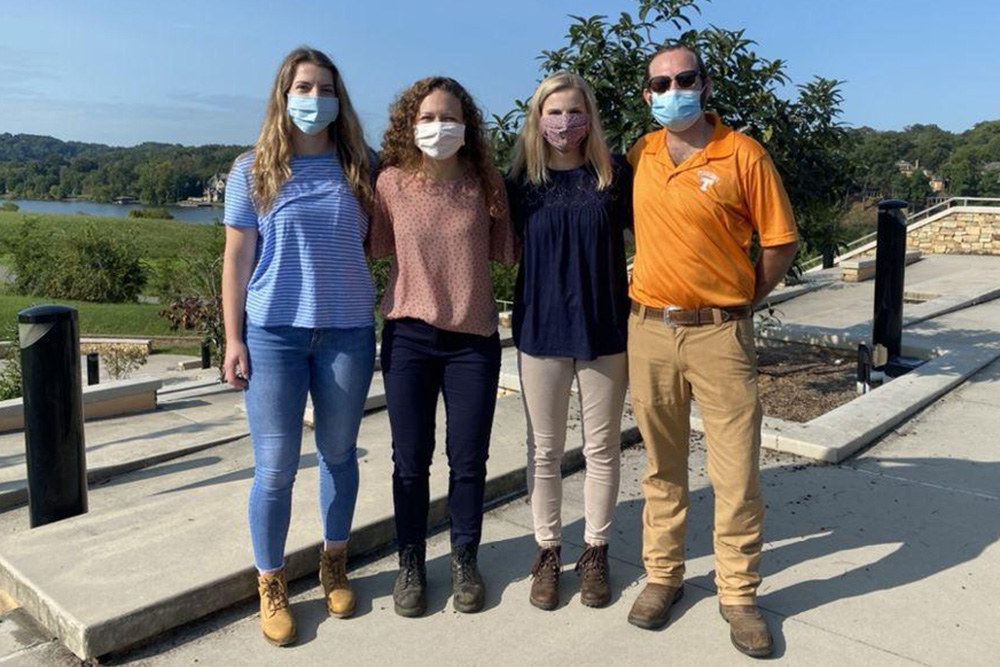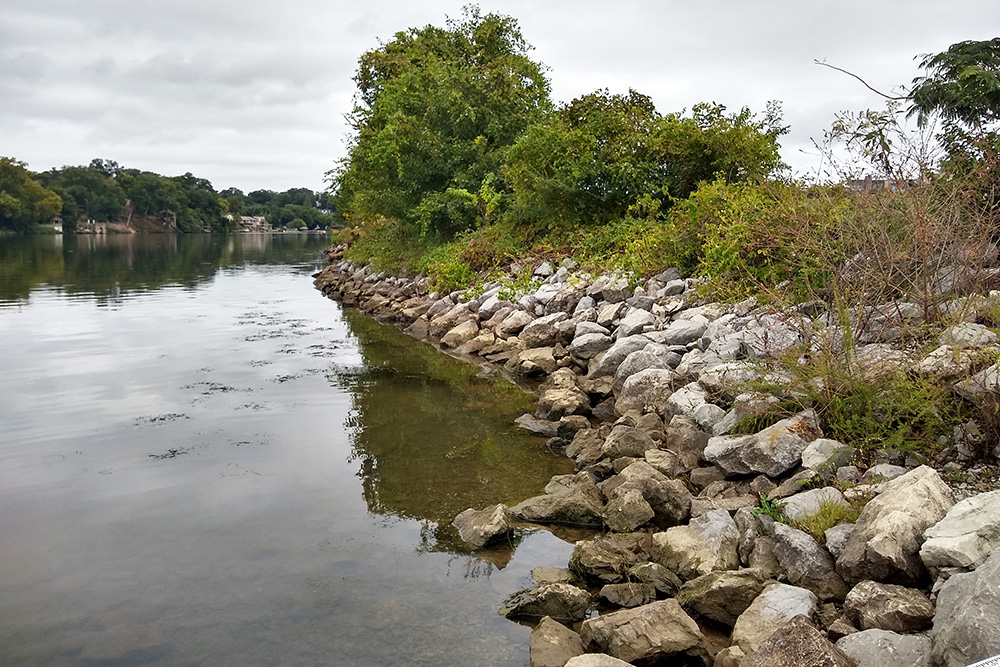Imagine a Tennessee River shoreline teaming with native wildlife, where resilient communities of trees, shrubs, grasses, sedges, wildflowers, and forbs stabilize soil and cast shade on aquatic plants and the fish, mussels, amphibians, and reptiles that thrive among them.
Pollinators, insects, and birds dance between the blooms, blades, and branches as river otters play and water fowl forage on this animate edge between land and water. This diverse landscape along rivers and streams is called a riparian buffer. When healthy, it provides valuable habitat, regulates flooding, erosion, and water quality while offering pleasant places for recreation and wildlife viewing.
Tennessee rivers and streams have lost much of the diversity and benefits of a healthy riparian buffer. In urbanized areas, the edge condition is predominantly riprap, human-placed rocks that are a common method to stabilize eroding shorelines. Riprap’s efficacy in this singular function has made it the default response to a complex, widespread challenge at the expense of the multitude of social, economic, and ecological benefits that alternative solutions and innovative thinking may otherwise provide,
Enter UT Knoxville civil and environmental engineering and landscape architecture students.

From left to right: Erin Collins, Sara Madgett, Megan Pitts, and Mason Hill.
When a CEE senior design team had the opportunity to do a project at UT Research Park at Cherokee Farm, one of their mentors—UT Plant Sciences and School of Landscape Architecture Associate Professor Brad Collett—proposed that they look at multi-functional ways to manage erosion on the property’s 1.5 miles of Tennessee River shoreline.
This set the focus for the students to create a plan for the recreational part of the property at the peninsula of the park called Cherokee Landing, which is currently covered in riprap.
Collett, whose research focus includes water resource stewardship and is directing the ongoing development of the Tennessee RiverLine, said the use of riprap has become an almost reflexive functional response.
“In terms of stopping or mitigating the erosion of the bank, riprap is a cost-effective measure,” he said. “But it falls short in terms of the other economic, social, and ecological benefits the riverbank is capable of providing. Lining the shore with limestone does not support diverse or resilient ecosystems, nor does it create a pleasant environment for recreation or easy public river access that can drive economic development.”
Vice President for UT Research Park at Cherokee Farm Rickey McCallum took interest in the project and said that in order for the UT Research Park to be a success, students, faculty, and campus leadership have to feel like it’s a place where they belong. Improving the environment at Cherokee Landing helps accomplish this goal.
In addition to providing an overall concept plan, the team also provided an archaeological study of the landing, concepts for enhancing the public greenway and landscape, including a riverfront area for paddleboard or kayak rentals, and site infrastructure that would help support future campus events, community engagements, and concerts for students in UT’s School of Music.
Student team leader Sara Madgett said that despite having over 100 hours of coursework, three internships, and multiple projects under her belt, she was still nervous about this project. However, she soon felt supported by the client and mentors.
—Sara Madgett
The cross-pollination of ideas also benefitted Caleb Brackney, who served as a student collaborator from the School of Landscape Architecture in the College of Architecture and Design. He learned equally as much about civil engineers and their strategies, workflows, and approach to solving problems.
“It has been an incredible learning experience to work with these classmates at UT and grow together as we address and confront an issue that plagues the Tennessee River,” he said.
Even though riprap is not as valuable in supporting ecological habitat, CEE Senior Lecturer Jenny Retherford, who coordinates senior design, notes that there was an exciting challenge encountered with the use of riprap.
“The riprap had an advantage in preserving the archeology by maintaining the cover and protecting the site along the waterway,” she said, noting that the path of the river has changed over time. “The multi-disciplinary experience has been incredibly intriguing in the effort to satisfy so many different goals in the same small plot of land.”
The team encountered some of the most complex, contradicting design constraints that Retherford said she has witnessed in a senior design course.
In Line with the Tennessee RiverLine
The senior design project is in alignment with the goals of the Tennessee RiverLine, which has a long-term vision of creating a continuous system of paddle-hike-bike trail experiences along the Tennessee River from its formation in Knoxville, Tennessee, to its confluence with the Ohio River in Paducah, Kentucky. This historic initiative seeks to transform the way communities, residents, and visitors engage and experience the river, and realize the economic development, public health, equitable access, and environmental stewardship benefits it offers.
UT Research Park at Cherokee Farm benefits from being in the vicinity of the Tennessee RiverLine project and having access to academic and industry support from key players involved in the project.
“Utilizing the strengths and connectivity of senior design projects has provided students and faculty not only an opportunity to become a part of our journey in developing the research park, but also the chance to collaborate with current tenants and industry partners we are trying to recruit to the UT Research Park property,” said Vice President for UT Research Park at Cherokee Farm Rickey McCallum.
External industry partners included Civil Environmental Consultants, Gresham-Smith, the Tennessee Department of Transportation, along with Associate Professor Kandace Hollenbach from the UT Department of Anthropology who helped guide the archaeology survey. All provided mentoring, guidance, and insight for students to take with them into their careers.
